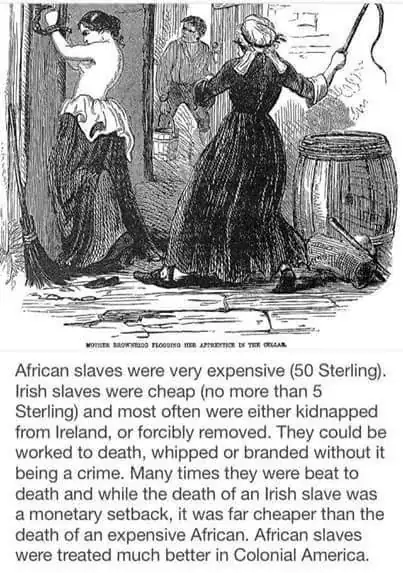Global Research claims that Irish prisoners were shipped to the US as slaves, is this true?
The Irish slave trade began when 30,000 Irish prisoners were sold as slaves to the New World. The King James I Proclamation of 1625 required Irish political prisoners be sent overseas and sold to English settlers in the West Indies. By the mid 1600s, the Irish were the main slaves sold to Antigua and Montserrat. At that time, 70% of the total population of Montserrat were Irish slaves.
http://www.globalresearch.ca/the-irish-slave-trade-the-forgotten-white-slaves/31076
This image is also doing the rounds on Facebook making a similar claim.
